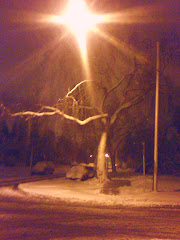An Open Entrance to the Shut Palace of Wrong Numbers
Franklin Rosemont
Chicago: Surrealist Editions
Just as misspelling is the least appreciated genre of creative writing, the Wrong Number is the most despised form of oral poetry and storytelling (75).
Surrealism is generally thought of as a thing of the past: Andre Breton holding court in pre-war Paris Cafes discussing Freud and Marx and writing poetry.
Franklin Rosemont, editor of Chicago’s Black Swan Press and (one of) the leading (contemporary) (American) Surrealists has taken his longstanding fascination with misdialed phone numbers as an occasion to write a contemporary surrealist manifesto of sorts, a reaffirmation of the presence of Surrealism as a force in our daily lives.
The wrong number: an exquisite corpse shared by strangers; a visit from the subconscious; a political opportunity; a symbol of sexual repression; an indicator of xenophobia. Rosemont’s often fanciful, sometimes exaggerated meanderings offer up the misdialed number as a seemingly comprehensive and insidious marker of our current social condition.
As an unconscious attempt to speak to . . . an Other, a stranger, every wrong number corresponds to the latent but unmistakable desire . . . for . . . radically non-alienated way of life (131).
The book begins as a treatise on modern society and on the Surrealist liberation of desire and imagination as the antidote to the “miserabilist world order.” Rosemont then lays out for us his “methodology” for researching wrong numbers. He shows how wrong numbers have been basically ignored, gone unstudied, despite their ubiquity in our culture. The wrong number soon moves from being the object of study itself to becoming the framework through which life can be explained.
In the second chapter Rosemont uses the conceit of wrong numbers to frame autobiographical anecdotes ranging from his family in Chicago and California to his meetings with Breton and several Surrealists in Paris in the 1960s. The stories in these chapters are charming and almost unbelievable in their chance encounters and fortuitous accidents.
From there, we move to a meandering mix of philosophy, psychoanalysis, gnosticism, linguistics and politics, all understood vis-à-vis the experience and analysis of wrong numbers. The result in these later chapters can be somewhat uneven. Like Surrealism itself, the book is at its best when it forgets itself, gets lost, and stumbles onto fragments of unexpected poetry. Some of the best moments are when Rosemont veers off into the performative, invocational language of manifestos.
The text becomes weighted down in places when Rosemont begins protesting too much. What can be fanciful at first starts to feel forced. One notable example is the discussion of sexuality, which starts off as an interesting and amusing contemplation. Rosemont goes to great lengths to compare the wrong number to every possible Freudian permutation of sexual dysfunction, ultimately stretching credulity. Attempting to keep the metaphor of the wrong number on task, the book often retreads, repeating itself--a worthy poetic device in a shorter piece that here creates a sense of redundancy and sometimes impatience. And in his desire to undertake a kind of serious and comprehensive “study” of the wrong number, the text, particularly in the later chapters, becomes dry and begins to read more like an academic paper than a paean to Surrealism.
Wrong Numbers also features drawings by Artur de Cruzeiro Seixas. The artwork is classical or “old school” surrealist, the cover art featuring a human body rising out of a telephone with images and figures that immediately place the book within that artistic framework.
Ultimately, the work is not only a call to openness (to chance, to strangers, to joy) but also a worthy contemporary analysis of our culture that, in its more playful moments, offers surprise and insight. It serves as a reminder that Surrealism is a force that remains afoot in the universe. We come to appreciate the smallest irritant as an opportunity for delight.
The struggle for a ‘poetic politics’ takes place on many levels . . . outburst of hilarity, generous gestures, impossible chance encounters, creams that haunt one for weeks on end, fits of delirium . . . inspired slips of the tongue, stunning coincidences that irrevocably alter the whole course of one’s life. . . . Immune to the forces of repression, they are themselves forces of poetry and therefore of freedom (137).
Surrealist Doodle
This was used as the cover of Karawane in 2006 and I have included it in on a number of bags and postcards over the years. Someone on the subway asked me if it was a Miro. I was very flattered!
Friday, January 09, 2015
Review of An Open Entrance to the Shut Palace of Wrong Numbers
Subscribe to:
Post Comments (Atom)





No comments:
Post a Comment